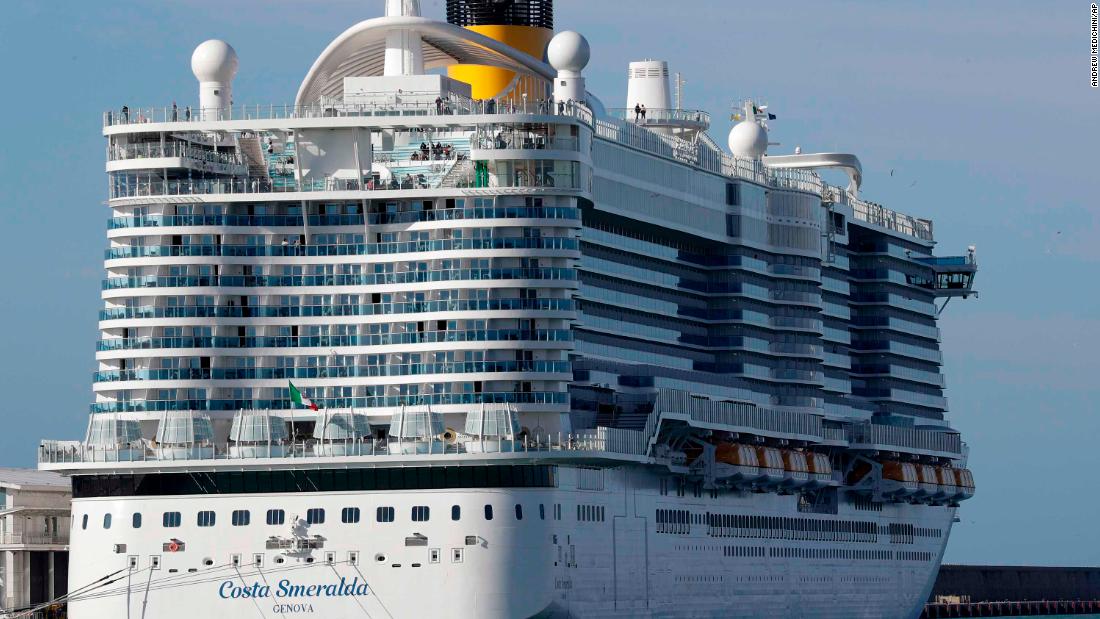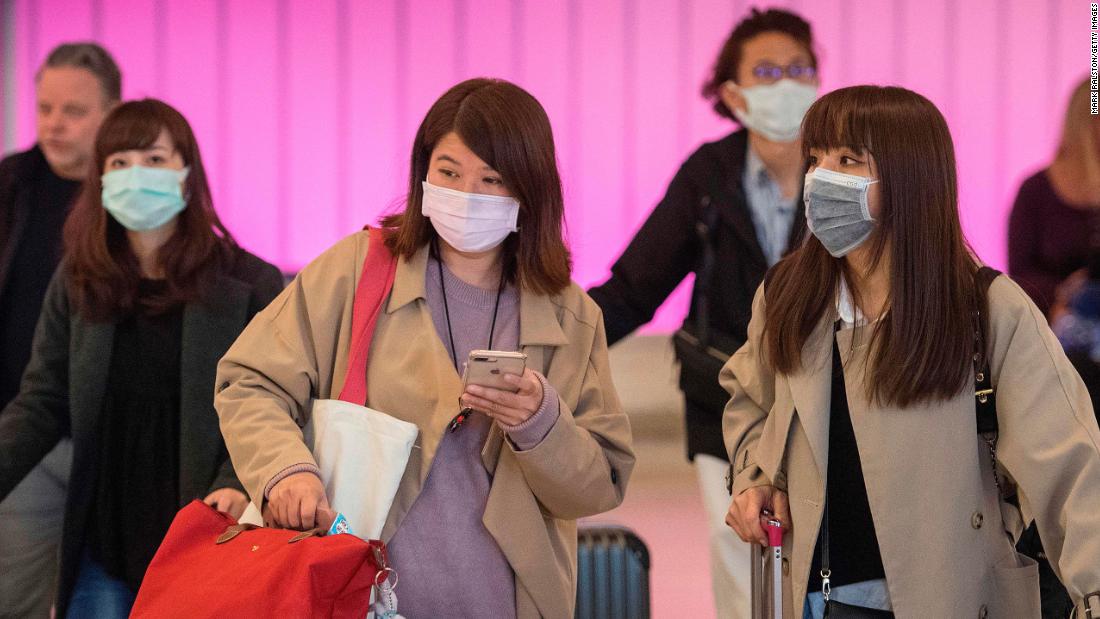[ad_1]

The decision came after cases of human-to-human transmissions were confirmed outside China, where the outbreak started. A first such case was confirmed in the United States on Thursday, following a case in Germany earlier this week.
On Thursday, 7,000 people, including 1,000 crew, were confined to a cruise ship in a port near Rome as a couple was being tested for the virus. A spokesperson for Costa Cruises told CNN that a 54-year-old woman aboard the cruise ship was suffering from a fever and that she and her husband were both being tested. Italian news agency ANSA and public broadcaster RAI reported that the woman and her husband were from Hong Kong and were being kept separately in solitary confinement in the hospital section of the cruiseliner.
The Costa Smeralda cruise ship is now docked at Civitavecchia port, a coastal town northwest of Rome. It had arrived from Palma de Majorca, Spain, as part of its tour of the western Mediterranean.
The test came back negative, the Italian Ministry of Health said Thursday night, but it was unclear when the passengers will be allowed to disembark.
Border closures
Several countries are repatriating their citizens from China and multiple air carriers have suspended flights to the country.
Russian state media reported Thursday that Prime Minister Mikhail Mishustin had signed an order to close Russia’s border with China in the Far East in an effort to prevent the spread of the virus.
“An order has been signed today, it is in the works. Today we will inform everyone accordingly about the relevant measures to close the border in the Far Eastern region and other measures that have been taken by the government,” Mishustin said, RIA reports.
Russia’s Far Eastern Federal District shares a land border with China, Mongolia and North Korea. Thursday’s announcement comes after several Russian tour operators and charter flight companies suspended flights to China.
Russia will also limit its railway service with China from Friday, TASS reported.
In the semi-autonomous city of Hong Kong, where only 10 cases have been confirmed, the government has closed a high-speed rail station that would usually connect the city to China’s mainland. Hong Kong has introduced new limits it says will cut the amount of mainland Chinese travelers coming to the city by 80%.
A CNN correspondent described Hong Kong as a ghost town, with empty shops and streets at a time that Chinese New Year celebrations usually light up the city. Instead, people lined up for more than three hours to collect surgical face masks to help keep them safe from the virus.
Multiple major air carriers are also canceling flights to and from parts of China, including British Airways, American Airlines, Air Canada, KLM, Lufthansa and United. The moves follow travel guidance from multiple governments advising against “nonessential” travel to the country.
Across Asia and elsewhere, strict checks and screening have been put in place for all travelers arriving from China — though this may be ineffective as scientists previously warned that the virus can be spread while patients are asymptomatic.
Quarantine city
Some 60 million people across Hubei, the province of which Wuhan is the capital, are on some level of lockdown, and many travelers from the region have been ordered to self-quarantine, holed up in their apartments or hotel rooms for days on end.
In Wuhan itself, 11 million people are marking a week on lockdown with no sign of immediate relief. Nor is there firm evidence that their sacrifice has been worth it, with the virus spreading around the country and scientists warning that other major cities could soon become self-sustaining epidemics.
“It is very difficult to definitely estimate when the outbreak reaches its peak. But I think in one week or about 10 days, it will reach the climax and then there will be no large-scale increases,” Zhong said.
CNN’s David Culver, Yong Xiong, Natalie Thomas and Steven Jiang in Beijing; and Helen Regan, Pauline Lockwood, Carly Walsh, Eric Cheung, Yuli Yang, Chermaine Lee, Alexandra Lin, Isaac Yee, Angus Watson and Sophie Jeong in Hong Kong contributed reporting. Angela Dewan and Gianluca Mezzofiore reported from London, while Livia Borghese reported from Rome.
[ad_2]
Source link

